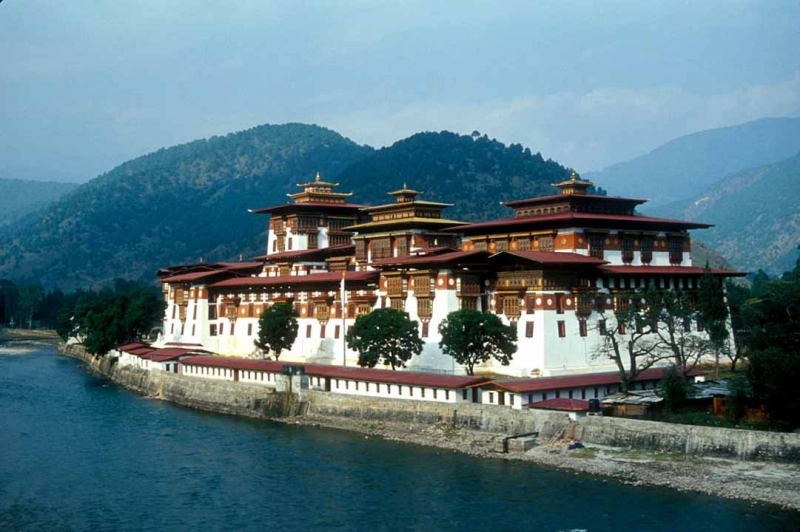Punakha Dzong
Punakha Dzong, also known as Pungthang Dewa Chenpoi Phodrang (the Palace of Great Happiness), is the next most famous Buddhist temple in Bhutan. It is a prominent cultural and architectural gem in Bhutan. This historic fortress-monastery, situated at the confluence of the Pho Chhu (Father River) and Mo Chhu (Mother River) rivers, boasts several typical cultural features that make it a significant site in Bhutanese heritage.
One key characteristic of Punakha Dzong is its architectural style. It exemplifies traditional Bhutanese fortress architecture with its whitewashed walls, intricately carved wooden windows, and sloping roofs. The dzong's design is adorned with symbolic elements, such as dragons and mandalas, reflecting Bhutan's Buddhist traditions and cultural values.
Inside Punakha Dzong, visitors will encounter beautifully decorated courtyards and temples. These areas are often used for various religious and cultural ceremonies, making the dzong a hub for both spiritual and communal gatherings. The assembly hall, or utse, is a significant part of the dzong where religious ceremonies, meetings, and dances take place, showcasing Bhutan's deep-rooted cultural practices.
One of the most iconic cultural features of Punakha Dzong is the Ngultrum Jaakey, a unique wooden bridge. This bridge is a traditional structure used to access the dzong and is built without the use of nails or iron. The Ngultrum Jaakey is not only a practical bridge but also a symbolic representation of the sacredness and strength of Bhutanese culture.
The annual Punakha Drubchen and Tsechu festivals are vital cultural events held at the dzong. These festivals celebrate Bhutanese heritage and include masked dances, religious rituals, and vibrant processions. They draw locals and tourists alike, fostering a sense of community and cultural pride.
The dzong also serves as the winter residence of the Je Khenpo, the head abbot of Bhutan, adding a spiritual dimension to its cultural significance. The presence of the Je Khenpo further highlights the monastery's pivotal role in Bhutan's religious and cultural landscape.
Address: HVJ7+V6Q, Bhutan
Opening hours: 09:00–17:00










